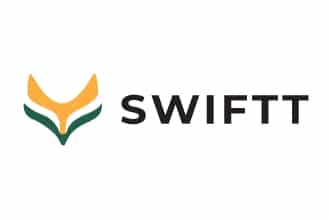Wälder aus dem All: Die Umgebung von Darmstadt aus Sicht der europäischen Copernicus-Sentinel-Satelliten (Foto: ©ESA)
Risikoerkennung
Satelliten als Retter der Wälder
Weltweit sind Wälder der Lebensraum für die meisten Amphibien-, Vogel- und Säugetierarten, aber auch für rund 300 Millionen Menschen. Weitere 1,6 Milliarden Menschen verdienen durch den Wald ihren Lebensunterhalt. Wälder haben zahlreiche ökologische Funktionen: Sie regulieren den Wasserhaushalt, schützen vor Erosion, speichern Kohlenstoff − die Liste ließe sich fortführen. Der Nutzen dieses Ökosystems beziffert sich auf über 100 Billionen Euro pro Jahr. Dies ist mehr als das gesamte globale Bruttoinlandsprodukt.
Wälder können sich zwar an langfristige Veränderungen der Umweltbedingungen anpassen, sind aber anfällig für plötzliche Störungen wie starker Schädlingsbefall, Feuer und Sturm. Der Klimawandel sorgt dafür, dass diese Risiken größer werden: Schadinsekten wie der Borkenkäfer vermehren sich stärker, Trockenheit begünstigt Waldbrände und schwere Stürme werden häufiger.
Frühzeitiges Handeln kann Risiken eindämmen und den wirtschaftlichen und ökologischen Schaden verringern. Im EU-Projekt Satellites for Wilderness Inspection and Forest Threat Tracking, kurz SWIFFT, entwickeln Wissenschaftler des L3S gemeinsam mit europäischen Partnern ein ganzheitliches Waldüberwachungssystem, das drohende Gefahren mit Hilfe von Satellitenbildern erkennt. SWIFFT will Forstverwaltern kostengünstige, einfache und effektive Fernerkundungstools an die Hand geben, die durch leistungsstarke Modelle des maschinellen Lernens unterstützt werden. Die erkannten Risiken werden anschaulich und eindeutig gekennzeichnet auf Übersichtskarten dargestellt.
Die Satellitendaten stellt Copernicus bereit, das Erdbeobachtungsprogamm der Europäischen Union. Die großen Datenmengen und der Aufstieg der künstlichen Intelligenz ermöglichen Erstaunliches: „Durch offen zugängliche Satellitendaten in Kombination mit neuesten KI-Algorithmen ist es uns möglich, regelmäßig die kompletten Wälder Europas in kurzer Zeit zu analysieren“, sagt Sven Ysker, der am L3S an der Einschätzung des Waldbrandrisikos arbeitet.
Die neuen Werkzeuge werden unter realen Bedingungen getestet und zielgerichtet optimiert. Deshalb sind auch mehrere Endnutzer aus der Forstwirtschaft am Projekt beteiligt, darunter die französiche Groupe Coopération Forestière, ein Zusammenschluss von Forstgenossenschaften, die 2,1 Millionen Hektar Privatwald bewirtschaften. Auch Rīgas meži ist dabei. Das städtische Unternehmen verwaltet Waldgrundstücke, Parks und Gärten der lettischen Haupstadt Riga.
Sobald die Übersichtskarten fertiggestellt sind und die Bereiche mit Windwurfschäden, Insektenbefall und Brandgefahr detailliert dargestellt werden, kann es losgehen: Forstverwalter können mit den Tools Risiken erkennen, rechtzeitig intervenieren und Ressourcen effizient zuweisen. Das System soll bis zum Jahr 2030 bis zu 39,6 Millionen Hektar Wald überwachen und schützen. Die Forstwirtschaft kann dadurch bis zu einer halbe Milliarde Euro an Überwachungskosten einsparen.
„Mit den nachhaltigen, effektiven und kostengünstigen Waldbewirtschaftungsinstrumenten von SWIFTT wird Europa in der Lage sein, den Klimawandel effektiver zu bekämpfen und die Artenvielfalt durch gesündere Wälder zu bewahren“, sagt Ysker.
Kontakt

Prof. Dr. Jörn Ostermann
Jörn Ostermann ist Mitglied des L3S und leitet das Institut für Informationsverarbeitung der LUH. Er forscht auf dem Gebiet der Signalverarbeitung mit Fokus auf Video-, Sequenzierungs- und Audiodaten.

Dipl.-Ing. Sven Ysker
Sven Ysker arbeitet im Bereich Machine Learning mit dem Forschungsschwerpunkt der Risikoabschätzung. Er beschäftigt sich zur Zeit mit der Waldbrandrisikovorhersage mittels künstlicher Intelligenz.


